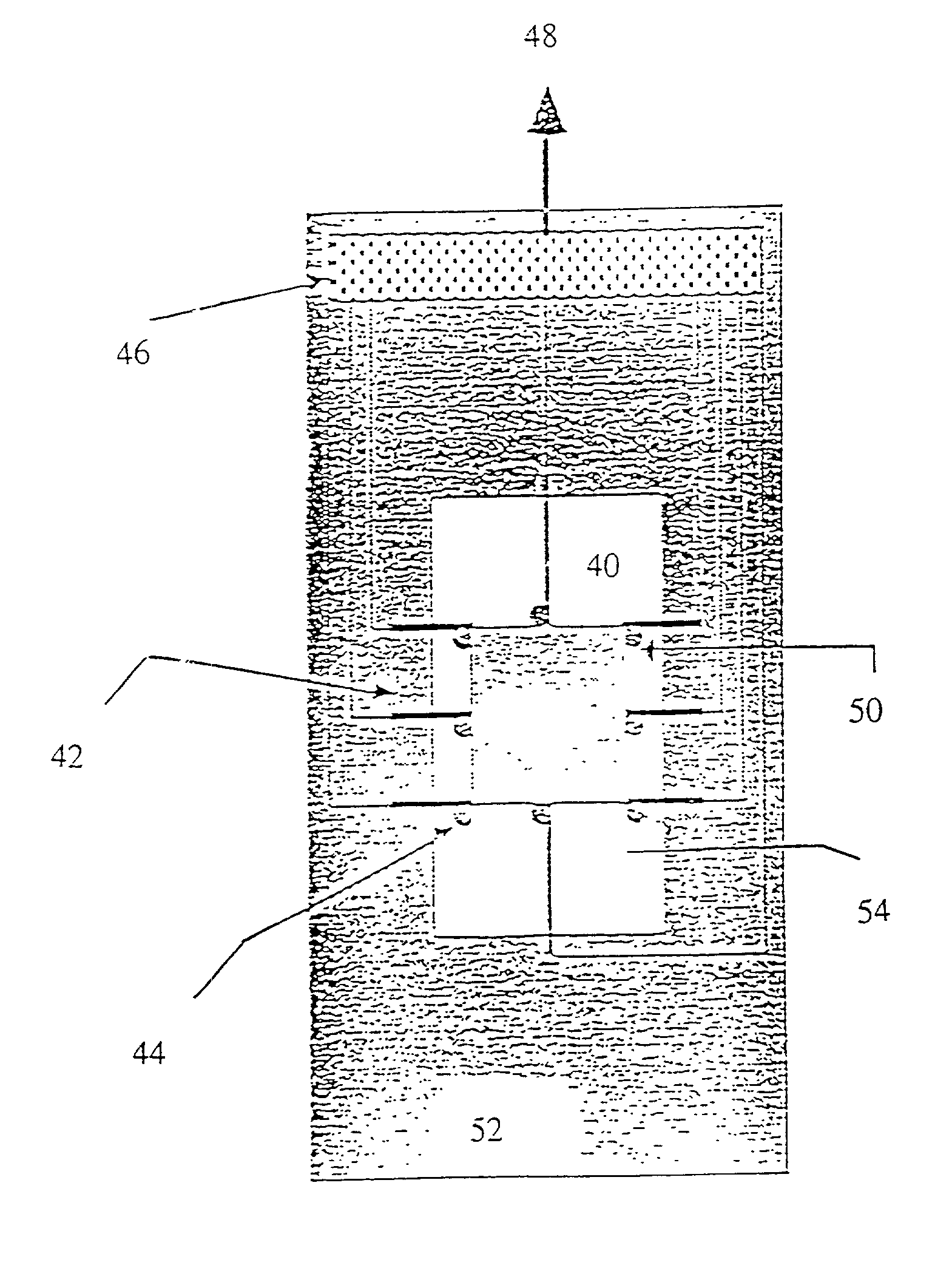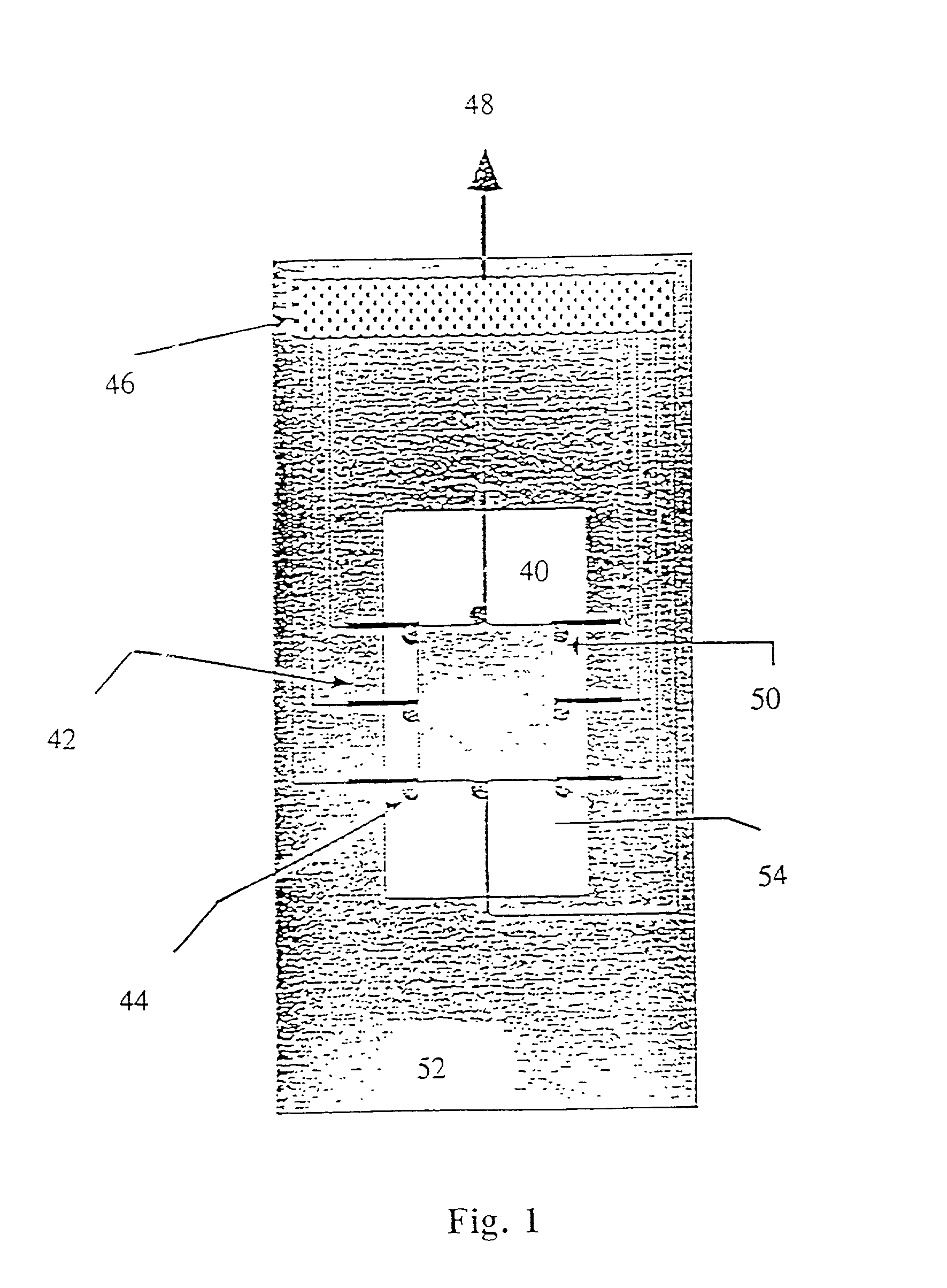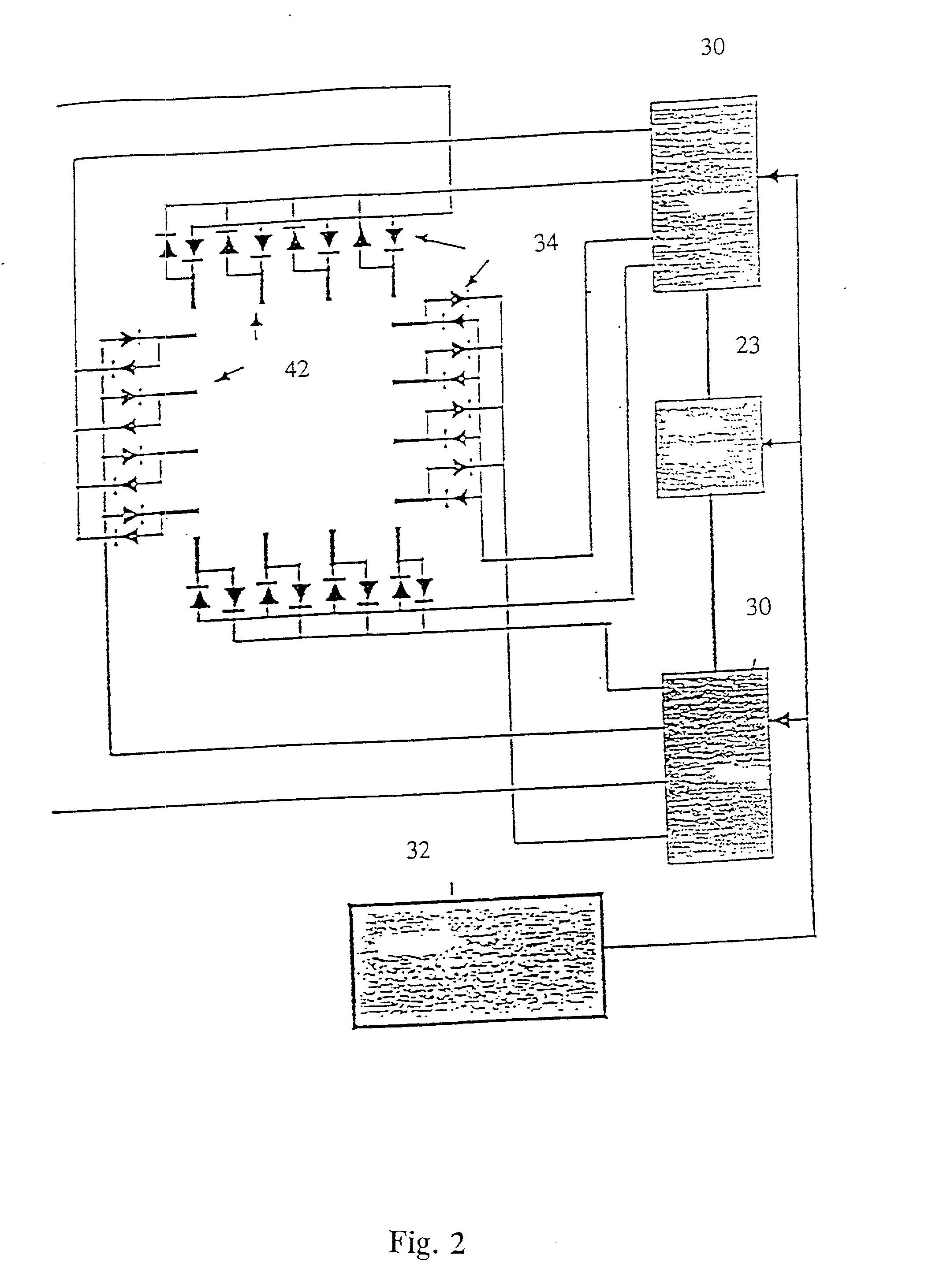Image processing and analysis of individual nucleic acid molecules
a nucleic acid and image processing technology, applied in the field of individual nucleic acid molecules, can solve the problems of inability to obtain sufficient quantities of dna from these sources which are sufficient for detailed analyses, time-consuming and often impractical, and achieve high throughput , the effect of rapid generation of information
- Summary
- Abstract
- Description
- Claims
- Application Information
AI Technical Summary
Benefits of technology
Problems solved by technology
Method used
Image
Examples
second embodiment
[0282] In the present invention, the spotted glass surface is rehydrated, after which a teflon block stamp is pressed onto the DNA spots, causing them to spread and fix on the sticky, derivatized surface. Experimental results indicate that this approach is effective for elongating surface mounted DNA without significant breakage. FIG. 29 shows an enlarged view of a DNA spot and the use of a teflon block in accordance with this embodiment of the present invention to spread the molecules onto the derivatized surface.
[0283] In a third, preferred method of the present invention, the deposited droplets of DNA solution are simply let dry on the derivatized surface. Experiments show that as the droplets dry, most of the fixed DNA remains fully elongated, aligned, and primarily deposited within the spot peripheries in a characteristic "sunburst" pattern, clearly observable in FIGS. 26A, B and C. Addition of glycerol to the spotting solution results in well elongated DNA molecules which are ...
example 1
Preparing DNA for Microscopy
[0347] G bacteria was grown as described by Fangman, W. L., Nucl. Acids Res., 5, 653-665 (1978), and DNA was prepared by lysing the intact virus in 1 / 2TBE buffer (1.times.: 85 mM Trizma Baste (Sigma Chemical Co., St. Louis Mo.), 89 mM boric acid and 2.5 mM disodium EDTA) followed by ethanol precipitation; this step did not shear the DNA as judged by pulsed electrophoresis and microscopic analysis.
[0348] DNA solutions (0.1 microgram / microliter in 1 / 2.times.TBE) were diluted (approximately 0.1-0.2 nanogram / al agarose) with 1.0% low gelling temperature agarose (Sea Plague, FMC Corp., Rockport Me.) in 1 / 2.times.TBE, 0.3 micrograms / ml DAPI (Sigma Chemical Co.), 1.0% 2-mercaptoethanol and held at 65.degree. C. All materials except the DNA were passed through a 0.2 micron filter to reduce fluorescent debris. Any possible DNA melting due to experimental conditions was checked using pulsed electrophoresis analysis and found not to be a problem.
example 2
Imaging DNA in a Gel
[0349] The sample of Example 1 was placed on a microscope slide. To mount the sample, approximately 3 microliters of the DNA-agarose mixture were carefully transferred to a preheated slide and cover slip using a pipetteman and pipette tips with the ends cut off to reduce Shear. Prepared slides were placed in a miniature pulsed electrophoresis apparatus as shown in FIGS. 1 and 2. All remaining steps were performed at room temperature. Samples were pre-electrophoresed for a few minutes and allowed to relax before any data was collected. Pulsed fields were created with either a chrontrol time (Chrontrol Corp., San diego, Calif.) or an Adtron data generating board (Adtron Corp., Gilbert, Ariz.) housed in an IBM AT computer and powered by a Hewlett Packard 6115A precision power supply. Field Strength was measured with auxiliary electrodes connected to a Fluke digital multimeter (J. Fluke Co., Everett, Wash.). A Zeiss Axioplan microscope (Carl Zeiss, West Germany) equi...
PUM
| Property | Measurement | Unit |
|---|---|---|
| Fraction | aaaaa | aaaaa |
| Fraction | aaaaa | aaaaa |
| Fraction | aaaaa | aaaaa |
Abstract
Description
Claims
Application Information
 Login to View More
Login to View More - R&D
- Intellectual Property
- Life Sciences
- Materials
- Tech Scout
- Unparalleled Data Quality
- Higher Quality Content
- 60% Fewer Hallucinations
Browse by: Latest US Patents, China's latest patents, Technical Efficacy Thesaurus, Application Domain, Technology Topic, Popular Technical Reports.
© 2025 PatSnap. All rights reserved.Legal|Privacy policy|Modern Slavery Act Transparency Statement|Sitemap|About US| Contact US: help@patsnap.com



